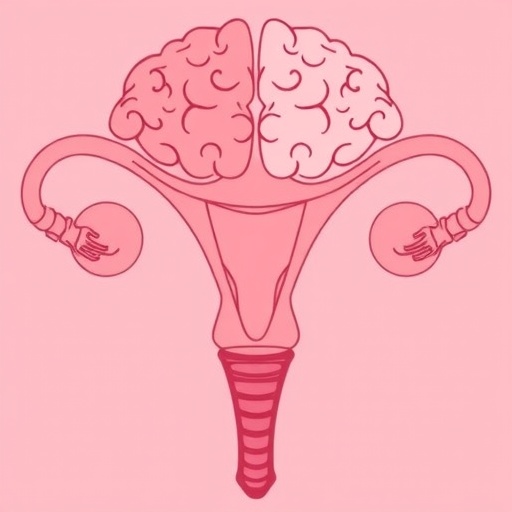
In a groundbreaking study published in the prestigious journal Menopause, researchers have unveiled compelling evidence linking common gynecological surgeriesâspecifically hysterectomy and bilateral oophorectomyâwith an elevated risk of stroke in women. Analyzing extensive data accumulated from the National Health and Nutrition Examination Survey (NHANES) spanning nearly two decades, this meta-analysis brings renewed urgency to understanding the long-term vascular outcomes of these frequently performed procedures.
Stroke, a leading cause of mortality and disability worldwide, continues to pose an immense public health challenge. Despite advances in acute stroke management, prevention remains paramount, particularly for modifiable risk factors. Womenâs unique hormonal milieu, especially the protective effects afforded by endogenous estrogen prior to menopause, has long been recognized as influencing cerebrovascular health. However, surgical interventions that abruptly alter or remove hormone-producing organs may disrupt this protective balance with significant consequences.
Estrogenâs role in vascular physiology is multifaceted; it modulates endothelial function, influences lipid profiles, and exerts anti-inflammatory effects within cerebral arteries. Premenopausal women typically demonstrate significantly lower incidences of stroke compared to men of the same age groupâan advantage that diminishes markedly after menopause. The physiological shift characterizing the postmenopausal state corresponds with nearly a twofold increase in stroke risk, underscoring estrogenâs protective contribution.
Hysterectomy, the surgical removal of the uterus, can precipitate premature ovarian insufficiency by interfering with ovarian blood supply, thereby reducing systemic estrogen levels earlier than the natural menopausal transition. Bilateral oophorectomyâthe removal of both ovariesâinduces an even more abrupt hormonal decline, slashing circulating estradiol levels by as much as 80% and reducing androgen concentrations by approximately half. These hormonal changes have profound implications not only for reproductive capacity but also for cardiovascular and cerebrovascular health.
This newly published meta-analysis incorporated data from over 21,000 women monitored for an average of 8.3 years, during which 193 stroke-related mortalities were reported. The rigorous statistical evaluation revealed that women undergoing hysterectomy combined with bilateral oophorectomy faced a markedly higher stroke risk relative to those without such surgeries. Interestingly, hysterectomy alone or coupled with the removal of only one ovary (unilateral oophorectomy) did not exhibit the same degree of elevated risk in the cohort studied.
However, when this study’s findings were synthesized with those from other large-scale cohorts through pooled analysis, a nuanced landscape emerged. Women subjected to hysterectomy with bilateral oophorectomy experienced an 18% increased stroke risk, while those who had a hysterectomy alone displayed a more modest, yet noteworthy, 5% greater risk. These findings collectively challenge the perception of these surgeries as benign with respect to long-term vascular health.
One limitation acknowledged by the authors is the absence of detailed information regarding the medical indications that precipitated surgery. Despite this, existing meta-analyses have found no significant correlation between the underlying reasonâbenign versus malignant conditionsâand stroke risk, suggesting that the surgical intervention itself influences vascular outcomes rather than the pathology prompting it. Likewise, current evidence does not stratify risk based on specific gynecological diagnoses such as endometriosis, adenomyosis, uterine fibroids, abnormal bleeding, or pelvic organ prolapse.
The study authors highlight the need for further research incorporating larger cohorts with extended follow-up intervals to dissect how various factors modulate stroke risk post-surgery. Such factors include stroke subtype differentiation (ischemic versus hemorrhagic), patient age at the time of surgery, adoption of differing surgical techniques (minimally invasive versus open procedures), and menopausal status at surgery. Parsing these variables will be crucial to tailor risk assessment and inform clinical decision-making for women considering or undergoing these surgeries.
These findings carry significant implications for clinical practice, emphasizing the importance of cardiovascular risk evaluation prior to elective gynecological surgeries. Moreover, they stress the necessity of proactive risk mitigation strategies postoperatively, potentially including lifestyle interventions and pharmacologic therapies aimed at reducing cerebrovascular risk. Physicians and patients alike must weigh the immediate benefits of surgery against potential long-term vascular consequences, particularly in cases where alternative treatments could be pursued.
Dr. Stephanie Faubion, medical director for The Menopause Society, underscores the critical nature of these revelations: âThe results of this study demonstrate increased stroke risk related to hysterectomy and/or bilateral oophorectomy, highlighting that these common procedures carry longer-term risks. They also call attention to an opportunity for more careful assessment of cardiovascular risk and implementation of risk reduction strategies in women who undergo these surgeries.â This statement encapsulates the evolving understanding of the interconnectedness between reproductive surgeries and vascular health.
As stroke remains a formidable threat to womenâs health, particularly in the context of changing hormonal landscapes, these insights offer a vital paradigm shift. Historically, the focus on surgical outcomes concentrated on immediate surgical risks and gynecological sequelae, often overlooking systemic effects that manifest years later. This evidence encourages a more holistic approach, integrating endocrinological, vascular, and neurological perspectives into perioperative and long-term care.
In summary, the newly published research underscores a previously underappreciated vascular risk associated with hysterectomy and bilateral oophorectomy. By shining a spotlight on the complex interplay between abrupt hormonal depletion and cerebrovascular vulnerability, this study prompts an urgent reevaluation of how gynecological surgeries are approached and managed. It invites ongoing investigation and innovation aimed at safeguarding the neurological health of women through personalized medicine and thoughtful surgical planning.
For women navigating the menopause transition or contemplating surgical options, these findings reinforce the role of informed discussions with healthcare providers regarding the benefits and risks inherent in their choices. As menopause researchers and clinicians collectively advance the field, the goal remains clear: to empower women with knowledge and tools that promote longevity, vitality, and cognitive integrity throughout their lives.
Subject of Research: People
Article Title: Stroke risk in women with or without hysterectomy and/or bilateral oophorectomy: evidence from the NHANES 1999-2018 and meta-analysis
News Publication Date: 3-Sep-2025
Web References: https://menopause.org/wp-content/uploads/press-release/MENO-D-25-00029.pdf
References: DOI: 10.1097/GME.0000000000000002616
Keywords: Health and medicine
Tags: bilateral oophorectomy and strokeestrogen and cardiovascular healthestrogen’s role in stroke preventionhormonal changes and cerebrovascular healthhysterectomy stroke risklong-term effects of gynecological surgerymenopause and stroke riskmeta-analysis of surgical outcomesNHANES data on women’s healthstroke prevention in womenvascular health post-hysterectomywomen’s health and surgery




